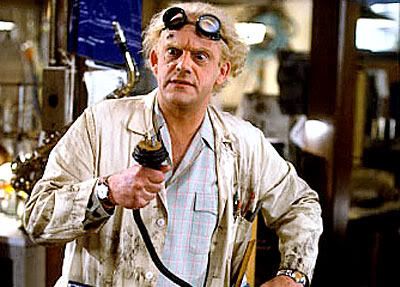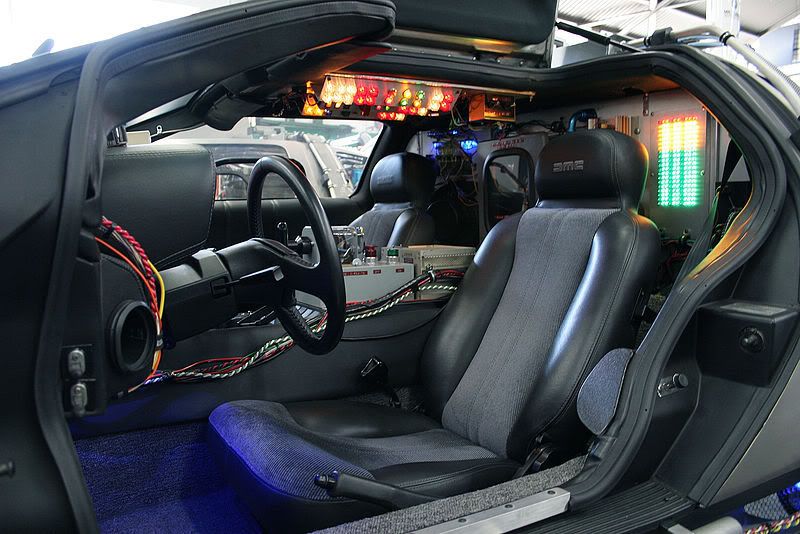Mmmmm, Laaaaaaser Taaaaaaag *gurgle.*
So I saw this "Light Strike" stuff on shelves for months and months, and kept thinking "wow, that's cool, maybe I'll look in to it." Well, I kept not looking in to it and to tell you the truth when I finaly did neither the website nor the packaging really did a very good job of informing me on the system or how it worked, so I just kind of threw up my hands and ignored it.
Fast forward about six months and my woman and I are in one of the stores in our area, in a clearance section, and we notice a HUGE amount of this stuff on MAJOR clearance. So I went home and one last time tapped "Light Strike" in to Google to try to dig up some info.
DANG. Either a lot of this stuff wasn't on the internet before, or I managed to miss it - found some great reviews and a small but budding community of people interested in it, and in modifying it. We immediately went back and basically cleared out the store's stock for about half off of original pricing.
Let me start by saying I think that Wowwee (the company that makes those "Paper Jamz" guitars) really failed their product in terms for advertising and packaging. I would have bought this stuff over a year ago at full retail price if I'd had any idea what it was I would be getting in to. I'm planning on emailing their PR department a link to this blog post because this product should have taken off like wildfire.
The game centers around the guns, or "strikers." Strikers are little pistols with both an infrared emitter and receiver.
 |
| The three varieties of Strikers and the mini-targets that come with them. |
The gun itself tracks damage taken and has several firing modes, a "shield" function, and the ability to select between one of four team colors - blue, red, yellow and green. If you fire too quickly the gun's electronics simulate the pistol "overheating" and you are prevented from firing for several seconds while it "cools down." Take enough hits and your gun is disabled until you press your "shield" button and the trigger at the same time, at which point you "respawn" and once again enter the fray, so to speak...
 |
| One of the Assault Strikers. |
Additional accessories and guns are available. "Assault strikers" are larger versions of the gun with two additional firing modes and the capacity to accept some accessories, plus they don't "overheat."
 |
| Another variety of Assault Striker, with the rapid fire attachment. |
Assault strikers have a limited "ammunition capacity" and when you are out of shots you press a button to "reload." Your rate of fire, ammo capacity and reload speed is all dependent on the firing mode you are in - the more powerful firing modes fire slower and take longer to reload, but do much more damage. Accessories for the assault strikers include a "scope" which doubles the range of the gun, a "rapid fire" attachment that significantly increases your ammo capacity for the fastest fire mode, a sort of "grenade launcher" that produces an incredibly powerful but short-range blast, and an "enemy scanner" that decreases the amount of damage you take as well as telling you where a nearby enemy is located, as long as they are within 30 ft. and are in front of you.
 |
| The third variety of Assault Striker with the "scope" attached. |
Additionally you can get a sensor vest and something called an Intelligent Targeting System. The vest is, honestly, mostly useless. You can take twice as much damage when wearing it as you can when you're just carrying the gun, but when you're "dead" it has no sound to alert you and does not disable your gun - so you can still run around shooting and basically be "invincible." This does provide some interesting possibilities for a couple of types of games, but aside from that isn't very useful. The ITS is awesome, however, with three modes; sentry, bomb and medic. First, to "control" the ITS one team must shoot it five times. There are light-up panels on the exterior of the unit that show how many times it has been shot and change color to reflect the team that has been shooting it. If blue team has shot the unit twice and then red team starts shooting it blue team's hits will first be taken away before red teams hits start showing. Once a team controls the unit, what it does changes depending on what mode it is in. In sentry mode it will start spinning around blasting the other teams. In bomb mode it will count down and once the countdown is complete it can be shot by the controlling team to produce an "explosion" that "kills" all nearby enemies. In medic mode each time the controlling team shoots it they get back some health.
The ITS unit
Out of the box, the most useful things to have are the assault strikers and the ITS. Of the accessories for the assault strikers, the scope is really the most useful, though the other accessories may be handy depending on what you want to accomplish.
 |
| The "full-size" targets that come with the Assault Strikers. These can also be purchased separately, in packs of one or two. |
I have done some tests and in broad daylight was able to hit another assault striker with one of my own from about 100 ft away. In the dark this range at least TRIPLED. That's without the scope add-on which DOUBLES the range of the gun. I've seen some reviews by fans of other laser tag systems complaining about the range of these guns - considering that 100 ft. is over 3 times the range of your typical NERF gun and there are no darts to pick up, I'm not complaining. We have four children, and every NERF product in the house has quickly lost all of its ammunition and been forgotten out in the yard to be destroyed by rain. I don't anticipate this problem with Light Strike at all. Besides which I suspect that many of the poor reviews regarding the range of the guns has more to do with the reviewer's aim, as the guns can be somewhat tricky to aim at ranges greater than about 30-50 feet. Additionally, the practice targets that come with each gun do not appear to be as sensitive as the guns themselves, and so therefore cannot be hit from as far away.
This entry is starting to get pretty long, so I'll be writing up another one very soon in regards to my ideas about this system, game types we are/will be playing, modifications I will be making, etc. I will also probably make up a couple of video blog entries to show off some of the cool stuff I'll be doing with it. At current count we have 9 assault strikers, 4 strikers, two ITS units, two rapid-fire attachments and a whole mess of scope attachments. I'm planning to do some extensive modding and tweaking with this system, as well as picking up two more strikers and another assault striker for a grand total of 16 guns. As handy as I am with electronics, I anticipate being able to maintain and use this system for years and years to come and am very seriously kicking around the idea of starting up a semi-regular game weekend and inviting a bunch of people out. We live on 7.5 acres and have tons of space to set up some really cool stuff, and with all the features this system has I foresee being able to create some incredibly fun scenarios and teams developing some inventive tactics.
In closing, on the off chance I can actually get someone at Wowwee to read this post, PLEASE DON'T DISCONTINUE THIS LINE. Revise your branding, correct some errors and some (minor) flaws in the system, and keep making it! This has incredible potential!
So stay tuned, because the next post on this stuff is going to get in to the cool stuff. 'Til then, just remember that I am taking great pleasure in this system, and as Tony Stark says - if there's one thing you can count on, its me pleasuring myself!











